Allstate 2014 Annual Report Download - page 265
Download and view the complete annual report
Please find page 265 of the 2014 Allstate annual report below. You can navigate through the pages in the report by either clicking on the pages listed below, or by using the keyword search tool below to find specific information within the annual report.-
 1
1 -
 2
2 -
 3
3 -
 4
4 -
 5
5 -
 6
6 -
 7
7 -
 8
8 -
 9
9 -
 10
10 -
 11
11 -
 12
12 -
 13
13 -
 14
14 -
 15
15 -
 16
16 -
 17
17 -
 18
18 -
 19
19 -
 20
20 -
 21
21 -
 22
22 -
 23
23 -
 24
24 -
 25
25 -
 26
26 -
 27
27 -
 28
28 -
 29
29 -
 30
30 -
 31
31 -
 32
32 -
 33
33 -
 34
34 -
 35
35 -
 36
36 -
 37
37 -
 38
38 -
 39
39 -
 40
40 -
 41
41 -
 42
42 -
 43
43 -
 44
44 -
 45
45 -
 46
46 -
 47
47 -
 48
48 -
 49
49 -
 50
50 -
 51
51 -
 52
52 -
 53
53 -
 54
54 -
 55
55 -
 56
56 -
 57
57 -
 58
58 -
 59
59 -
 60
60 -
 61
61 -
 62
62 -
 63
63 -
 64
64 -
 65
65 -
 66
66 -
 67
67 -
 68
68 -
 69
69 -
 70
70 -
 71
71 -
 72
72 -
 73
73 -
 74
74 -
 75
75 -
 76
76 -
 77
77 -
 78
78 -
 79
79 -
 80
80 -
 81
81 -
 82
82 -
 83
83 -
 84
84 -
 85
85 -
 86
86 -
 87
87 -
 88
88 -
 89
89 -
 90
90 -
 91
91 -
 92
92 -
 93
93 -
 94
94 -
 95
95 -
 96
96 -
 97
97 -
 98
98 -
 99
99 -
 100
100 -
 101
101 -
 102
102 -
 103
103 -
 104
104 -
 105
105 -
 106
106 -
 107
107 -
 108
108 -
 109
109 -
 110
110 -
 111
111 -
 112
112 -
 113
113 -
 114
114 -
 115
115 -
 116
116 -
 117
117 -
 118
118 -
 119
119 -
 120
120 -
 121
121 -
 122
122 -
 123
123 -
 124
124 -
 125
125 -
 126
126 -
 127
127 -
 128
128 -
 129
129 -
 130
130 -
 131
131 -
 132
132 -
 133
133 -
 134
134 -
 135
135 -
 136
136 -
 137
137 -
 138
138 -
 139
139 -
 140
140 -
 141
141 -
 142
142 -
 143
143 -
 144
144 -
 145
145 -
 146
146 -
 147
147 -
 148
148 -
 149
149 -
 150
150 -
 151
151 -
 152
152 -
 153
153 -
 154
154 -
 155
155 -
 156
156 -
 157
157 -
 158
158 -
 159
159 -
 160
160 -
 161
161 -
 162
162 -
 163
163 -
 164
164 -
 165
165 -
 166
166 -
 167
167 -
 168
168 -
 169
169 -
 170
170 -
 171
171 -
 172
172 -
 173
173 -
 174
174 -
 175
175 -
 176
176 -
 177
177 -
 178
178 -
 179
179 -
 180
180 -
 181
181 -
 182
182 -
 183
183 -
 184
184 -
 185
185 -
 186
186 -
 187
187 -
 188
188 -
 189
189 -
 190
190 -
 191
191 -
 192
192 -
 193
193 -
 194
194 -
 195
195 -
 196
196 -
 197
197 -
 198
198 -
 199
199 -
 200
200 -
 201
201 -
 202
202 -
 203
203 -
 204
204 -
 205
205 -
 206
206 -
 207
207 -
 208
208 -
 209
209 -
 210
210 -
 211
211 -
 212
212 -
 213
213 -
 214
214 -
 215
215 -
 216
216 -
 217
217 -
 218
218 -
 219
219 -
 220
220 -
 221
221 -
 222
222 -
 223
223 -
 224
224 -
 225
225 -
 226
226 -
 227
227 -
 228
228 -
 229
229 -
 230
230 -
 231
231 -
 232
232 -
 233
233 -
 234
234 -
 235
235 -
 236
236 -
 237
237 -
 238
238 -
 239
239 -
 240
240 -
 241
241 -
 242
242 -
 243
243 -
 244
244 -
 245
245 -
 246
246 -
 247
247 -
 248
248 -
 249
249 -
 250
250 -
 251
251 -
 252
252 -
 253
253 -
 254
254 -
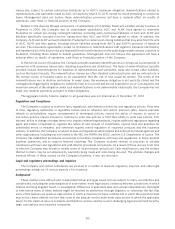 255
255 -
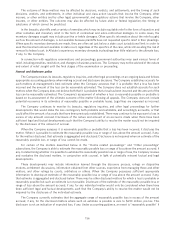 256
256 -
 257
257 -
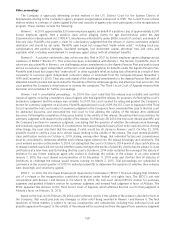 258
258 -
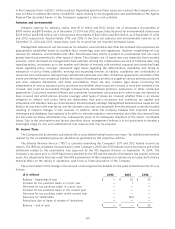 259
259 -
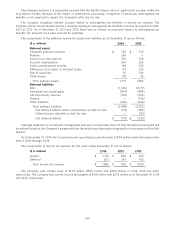 260
260 -
 261
261 -
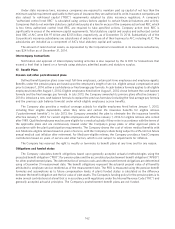 262
262 -
 263
263 -
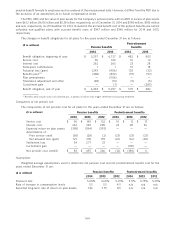 264
264 -
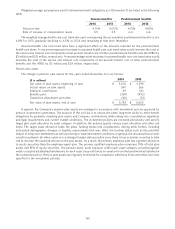 265
265 -
 266
266 -
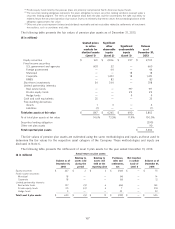 267
267 -
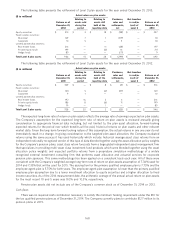 268
268 -
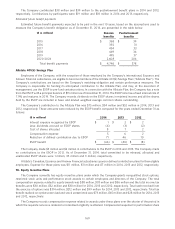 269
269 -
 270
270 -
 271
271 -
 272
272 -
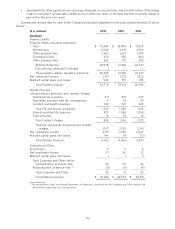 273
273 -
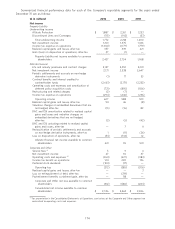 274
274 -
 275
275 -
 276
276 -
 277
277 -
 278
278 -
 279
279 -
 280
280
 |
 |

Weighted average assumptions used to determine benefit obligations as of December 31 are listed in the following
table.
Pension benefits Postretirement benefits
2014 2013 2014 2013
Discount rate 4.10% 5.00% 4.15% 4.85%
Rate of increase in compensation levels 3.5 3.5 n/a n/a
The weighted average health care cost trend rate used in measuring the accumulated postretirement benefit cost is
6.8% for 2015, gradually declining to 4.5% in 2024 and remaining at that level thereafter.
Assumed health care cost trend rates have a significant effect on the amounts reported for the postretirement
health care plans. A one percentage-point increase in assumed health care cost trend rates would increase the total of
the service and interest cost components of net periodic benefit cost of other postretirement benefits and the APBO by
$2 million and $25 million, respectively. A one percentage-point decrease in assumed health care cost trend rates would
decrease the total of the service and interest cost components of net periodic benefit cost of other postretirement
benefits and the APBO by $2 million and $24 million, respectively.
Pension plan assets
The change in pension plan assets for the years ended December 31 is as follows:
2014 2013
($ in millions)
Fair value of plan assets, beginning of year $ 5,602 $ 5,398
Actual return on plan assets 540 566
Employer contribution 49 561
Benefits paid (368) (892)
Translation adjustment and other (40) (31)
Fair value of plan assets, end of year $ 5,783 $ 5,602
In general, the Company’s pension plan assets are managed in accordance with investment policies approved by
pension investment committees. The purpose of the policies is to ensure the plans’ long-term ability to meet benefit
obligations by prudently investing plan assets and Company contributions, while taking into consideration regulatory
and legal requirements and current market conditions. The investment policies are reviewed periodically and specify
target plan asset allocation by asset category. In addition, the policies specify various asset allocation and other risk
limits. The target asset allocation takes the plans’ funding status into consideration, among other factors, including
anticipated demographic changes or liquidity requirements that may affect the funding status such as the potential
impact of lump sum settlements as well as existing or expected market conditions. In general, the allocation has a lower
overall investment risk when a plan is in a stronger funded status position since there is less economic incentive to take
risk to increase the expected returns on the plan assets. As a result, the primary employee plan has a greater allocation
to equity securities than the employee-agent plan. The primary qualified employee plan comprises 79% of total plan
assets and 81% of equity securities. The pension plans’ asset exposure within each asset category is tracked against
widely accepted established benchmarks for each asset class with limits on variation from the benchmark established in
the investment policy. Pension plan assets are regularly monitored for compliance with these limits and other risk limits
specified in the investment policies.
165
